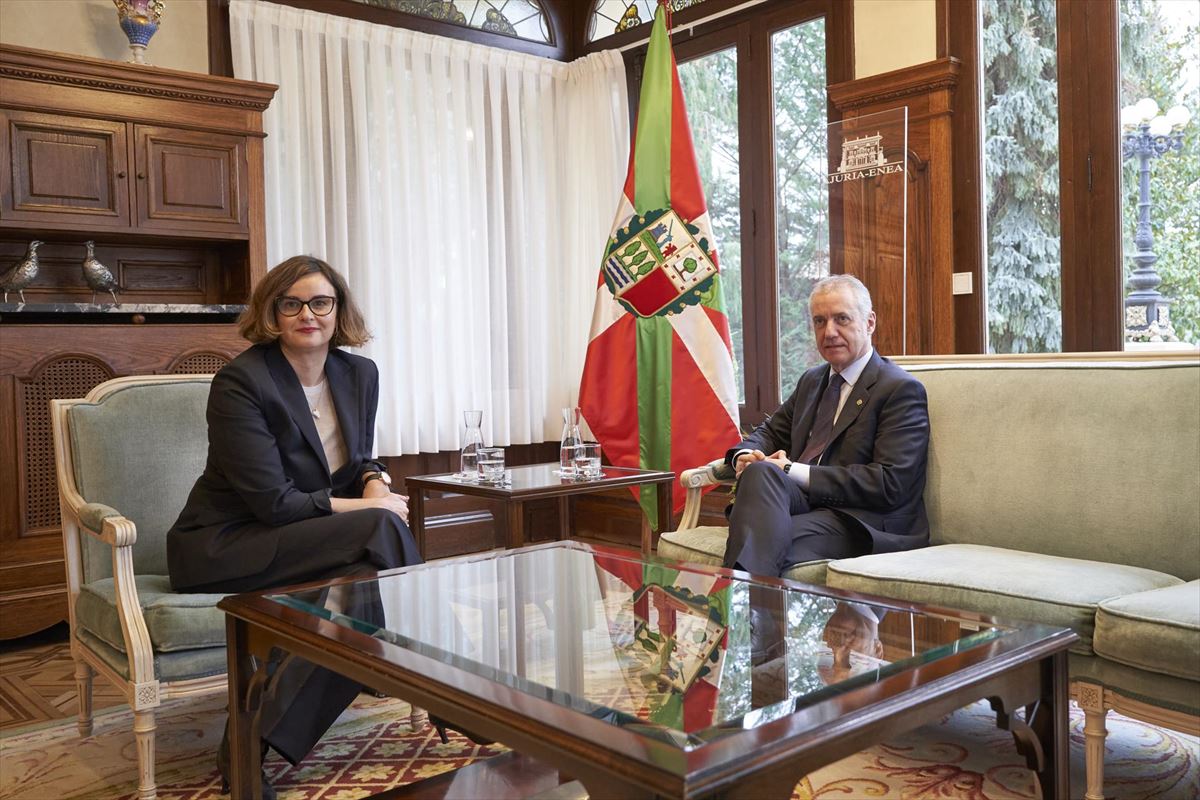This plan will have five axes and will be drawn up based on a reflection and a diagnosis shared with the main social and economic actors in the area.
The Basque Government approved on Tuesday the preparation of an interinstitutional strategic plan for the Busturialdea-Urdaibai region, which will have five axes and will be drawn up on the basis of a reflection and a diagnosis shared with the main social and economic actors in the area .
During the press conference after the Government Council, the spokesperson of the Basque government, Bingen Zupiria, explained that the design will take into account the region’s main strategic challenges.
The development of this plan was promoted in January by the Lehendakari, Iñigo Urkullu, and the Deputy General of Bizkaia, Elixabete Etxanobe, in the appearance in which they announced that the Board of Directors of the Guggenheim Museum Bilbao had granted itself a period of two months . Had time for years to analyze the “viability” and “feasibility” of the project to expand the museum to Urdaibai, and both agreed on the need to implement a “comprehensive” plan to respond to the needs of Urdaibai and the rest of Buturialdea.

According to Zupiria, the reason why they proposed to promote this strategic plan is mainly “its character that makes it different” from other regions “and that difference lies in the fact that it hosts the only biosphere reserve in the community.”
“And as a biosphere reserve, it has two main objectives: on the one hand, it is to preserve the environment that this region hosts, but it also aims to boost economic development and job creation,” he added .
This plan will be implemented according to the same model developed for the Priority Action Zones (ZAP), promoted through the Berpiztu programme, for the economic and employment reactivation of Euskadi.
The Busturialdea-Urdaibai region consists of 20 municipalities with approximately 46,300 inhabitants and is home to the only biosphere reserve in Euskadi. The Basque Government has emphasized that in recent years the “difficulties” have arisen from the different contexts experienced and the particular conditions in which activity is carried out in the region, have hampered the transformation of the specific economic and industrial fabric of the area, the development of new business projects and generation of new jobs “jeopardised”.
Therefore, he believes that the region needs a socio-economic development strategy that is “native and adapted to reality”, to the needs of its inhabitants and its natural environment, to the conditions and opportunities arising from its classification as a protected area.
Shared reflection and diagnosis
The executive has emphasized that the new plan should be drawn up on the basis of “a reflection and a shared diagnosis” with the main social and economic actors in the region.
As specified, this diagnosis may include aspects such as economic and industrial dynamization and diversification, a new culture of sustainable use of agricultural and fisheries resources, control of tourism in the area and its impacts, sanitation and water supply, mobility and the promotion of infrastructure . , social cohesion, diversification of the cultural sector or urban and environmental renewal.
Once this interinstitutional Strategic Plan has been drawn up, it will be sent to the Basque Parliament to allow for monitoring of the proposed initiatives. Bingen Zupiria added that this plan, the preparation of which has been approved by the Governing Council, will also coincide with a similar decision to be adopted next Thursday by the Board of Directors of the Provincial Council of Bizkaia.
Source: EITB
I am Ida Scott, a journalist and content author with a passion for uncovering the truth. I have been writing professionally for Today Times Live since 2020 and specialize in political news. My career began when I was just 17; I had already developed a knack for research and an eye for detail which made me stand out from my peers.



